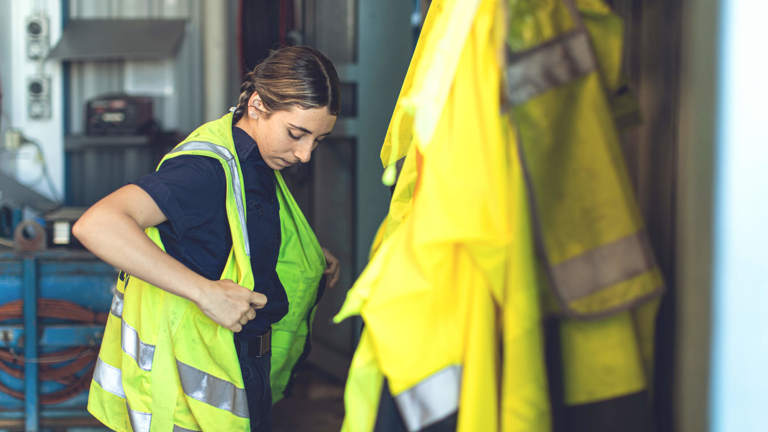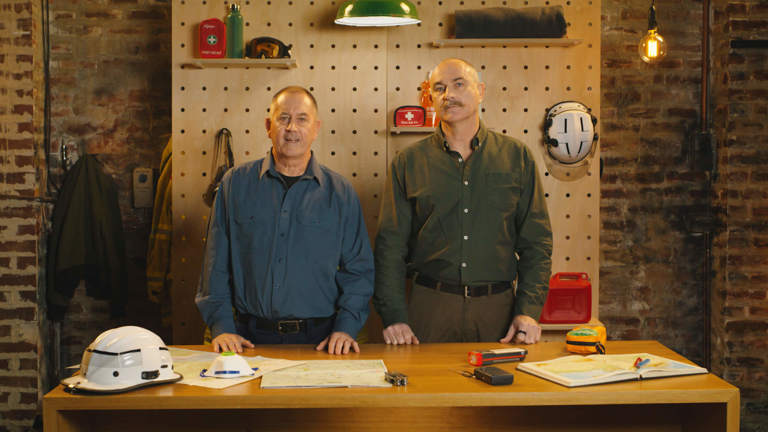Australia now faces the likelihood of larger, more severe bushfires than in the past.1 Jim Smith, volunteer firefighter and former Deputy Commissioner of Fire and Rescue NSW, has experienced the reality of this trend, and his advice for all Australians is to prepare well for bushfires and to always leave early for your own protection.
Sometimes, though, even the best-laid plans fail.
“Staying in your home in the direct path of an active bushfire is not an option you should plan for, but if it does happen, it’s essential to be prepared,” says Jim.
“That means knowing what to expect if you’re no longer able to leave safely and which steps you need to take to increase you and your family’s chances of survival.”
When bushfire approaches, know when to go
“The most important part of any bushfire preparation is having a comprehensive bushfire survival plan in place with a clear trigger for when to go,” Jim explains.
“A typical leave trigger would be if there’s a nearby fire that’s moving towards you, an Emergency Alert issued in your area, or a fire danger rating of Extreme or Catastrophic forecast for the next day.
“Always track advice from your local fire service,” stresses Jim. “And if you have vulnerable people in your household, such as children, the elderly or asthmatics, it’s best to leave the night before.
“However, if you are forced to stay in your home – say if the fire changes direction, increases intensity or advances faster than forecast – here’s what you need to do and know.”
Prepare a bushfire emergency kit
“Every bushfire survival plan should include a checklist of essential items to have to hand in a bushfire emergency kit,” says Jim.
“This will equip you to extinguish small fires, provide basic protection from heat, smoke and flames – and cover essential supplies for everyone staying.”
What to put in your bushfire emergency kit
Rather than waiting until bushfire season is upon you, Jim advises assembling the items for your kit now, especially if you live in a bushfire-prone area. They can be stored together in one place, along with your bushfire survival plan, so you can access everything you need in a hurry.
Some items to include are:2
- A battery-powered or solar radio, plus batteries
- Medicines and prescriptions
- A first-aid kit
- A mobile phone and a charger
- A waterproof torch and spare batteries
- Toiletries and sanitary supplies
- Woollen blankets (to protect you from the heat)
- Protective clothing (long-sleeved, natural fibre shirts, jeans, covered shoes, gloves)
- Respiratory protection (P2 and P3 masks)
- Enough non-perishable food items and drinking water for residents and animals for three days
- A bucket
- Towels
- A shovel
- A fire extinguisher
- Hoses
- Hand and backpack sprayers
- A ladder.2
What to do as the bushfire approaches
Even sheltering in a well-prepared house during a bushfire carries the risk of injury or death. However, if you are unable to safely leave, here are some essential steps to help you prepare for an oncoming bushfire.3
- Check gates are unlocked and open for firefighters.
- Clear leaves and twigs from roof gutters, decks and lawns.
- Bring flammable outdoor furniture, doormats and hanging baskets indoors.
- Block downpipes at the top with a tennis ball or sand-filled sock and fill the gutters with water (don’t forget to remove the blockage once the danger has passed).
- Hose down the sides of your property, including decks and surrounding plants.
- Take down the curtains.
- Fill your bath, buckets and bins with water.
- Close all windows and doors to prevent embers from starting fires inside.
- Secure any large animals in a safe area and contain pets in one room inside with plenty of drinking water.
- Drink plenty of water to keep hydrated and stay close to the house.
- Continually check for and douse spot fires around your property.3
What to do when the bushfire arrives
If the fire is approaching quickly, Jim says you should not attempt to evacuate. He advises you to shelter inside the safest building on your property and take the following precautions to help improve your chances of survival:
- Put on protective clothing, including a long-sleeved top, long pants and closed-in shoes.
- Disconnect hoses and fittings and bring them inside so they don’t burn.
- Connect a hose to your laundry tap and patrol for embers inside, particularly in the roof space.
- Close all the windows and doors and seal any gaps with wet towels.
- Shelter on the side of the house farthest away from the approaching fire in a room with multiple escape points.
- Stay low and use woollen blankets to protect yourself from the radiant heat.
- Monitor conditions and stay tuned to information channels if you can.
- Continue to drink plenty of water.
“The last contingency we tell people is that if the conditions in your house become intolerable, try to move to an area outside that’s already been burned, with clothing or blankets to shelter you from radiant heat,” adds Jim.
What to do once the bushfire has passed
“Once the fire front passes, continue to patrol for small spot fires and burning embers inside your roof space, under the house, on verandahs and decks, and in roof lines and gutters. Check your garden beds, too,” Jim says.
“It could be several hours until the threat from ember attacks passes, so you will need to remain vigilant. You’ll also want to contact friends and family to tell them you’re safe.”
You can also use the Red Cross service Register.Find.Reunite to let people know that you’re OK and to find others you’re not able to contact. This service only activates during times of emergency.4
Other tasks to take care of at this time include:5
- Shutting off damaged utilities
- Keeping your ID and important documents safe
- Protecting your home from weather, theft or vandalism
- Evaluating property damage and contacting your insurer
- Contacting your local RSPCA or a wildlife rescue organisation like WIRES for help with pets and other animals.6
If you are a Youi customer, you may wish to call our claims advisors on 13 9684(YOUI) to start your claims process.
No one wants to experience a bushfire. They are terrifying even for the most experienced firefighters, says Jim, who has experienced every major fire emergency in his state from 1980 to today, including the deadly Black Summer fires of 2019-2020.
“Taking the right steps if you are forced to shelter in place will give you the best possible chance of survival.”

For more expert tips to help you get bushfire ready, visit our you.prepared emergency content hub.
Jim Smith
Jim Smith is an active Rural Fire Service volunteer and former Deputy Commissioner for Fire and Rescue NSW. Jim served as NSW State Emergency Service Commissioner and is a recipient of the Australian Fire Service Medal (2008) and the NSW State Emergency Services Commissioner’s Commendation for Service (2015). He is General Manager of workplace mental health consultancy Ordinary Courage, and volunteers as a solicitor with Youth Law Australia. Youi is proud to partner with Jim in the creation of this bushfire preparedness content.
The content in this article has been prepared based on current government and emergency services guidelines and expert advice provided at the time of publishing. This information is subject to change. Please be sure to check for the latest information and always consider your personal circumstances regarding bushfire preparedness and response.
Where you have increased your cover or reduced your excess within 72 hours (or other period noted on your policy schedule) of a flood, storm, hail or bushfire occurring, cover will be limited to the amount that was effective prior to the change. Loss, damage or legal liability caused by, resulting or arising from flood, storm, hail or bushfire during the first 72 hours (or other period noted on your policy schedule) of your policy first being purchased is excluded unless certain conditions apply. Refer to the relevant PDS, TMD and your policy schedule for full T&Cs.
1 Source: CSIRO – Climate change: wildfire risk has grown nearly everywhere – but we can still influence where and how fires strike, July 2022
2 Qld Fire Department – Will you stay?, June 2024
3 Source: Secure NT – Stay and Defend Survival Plan
4 Source: Australian Red Cross – Letting others know you are safe in an emergency
5 Source: NSW Government – What to do immediately after a bushfire, May 2024
6 Source: WIRES – Emergency Rescue Advice



